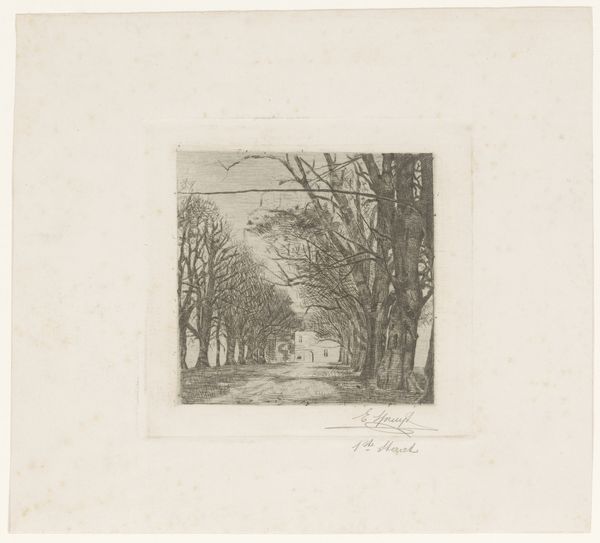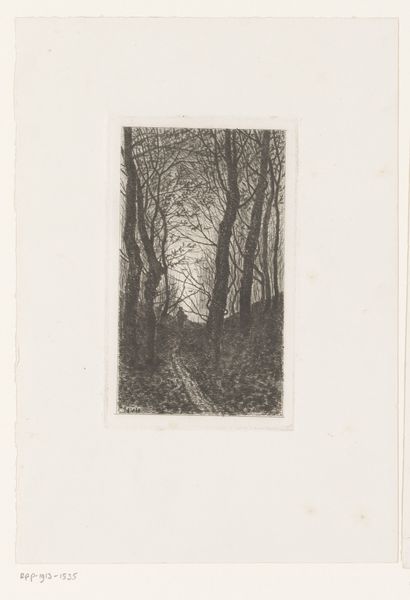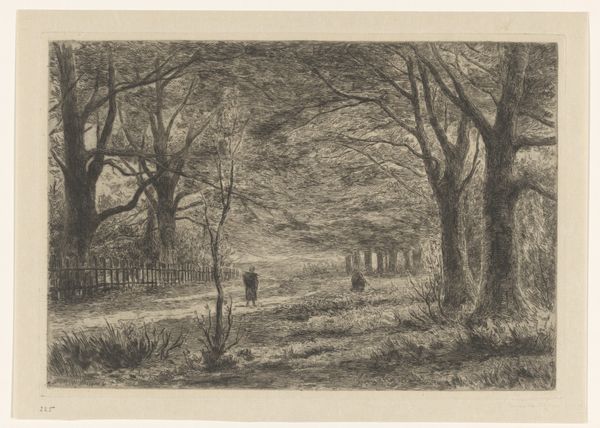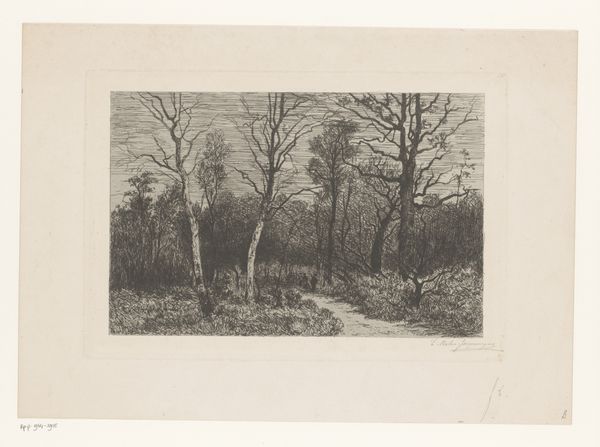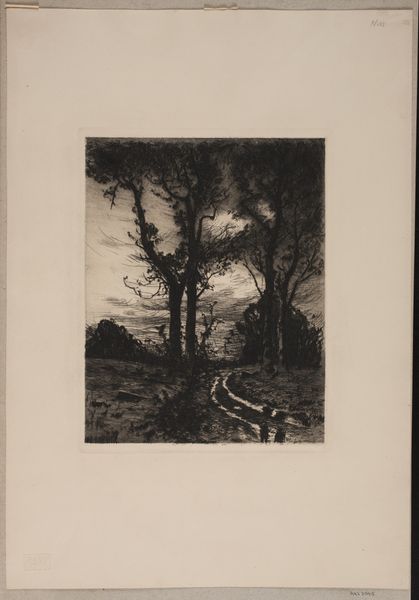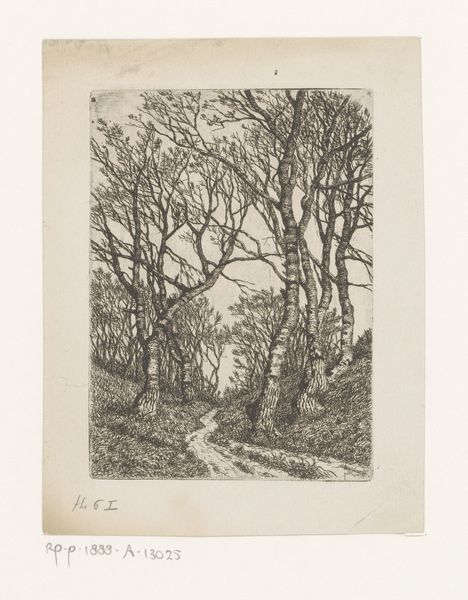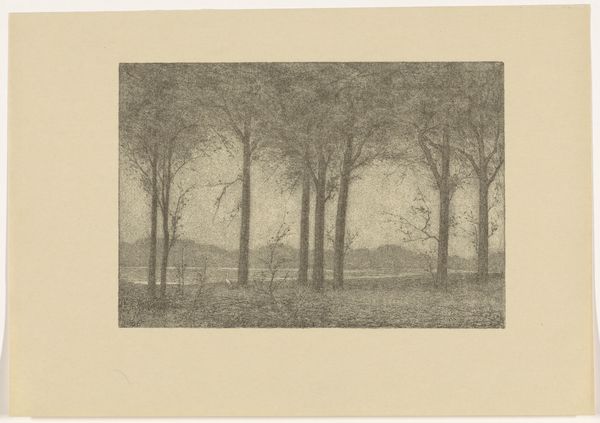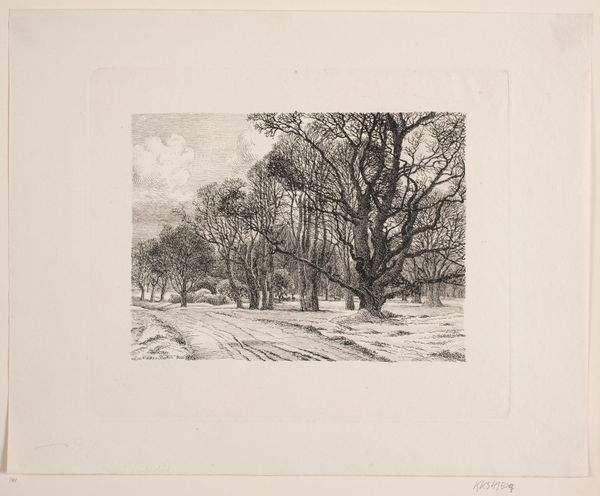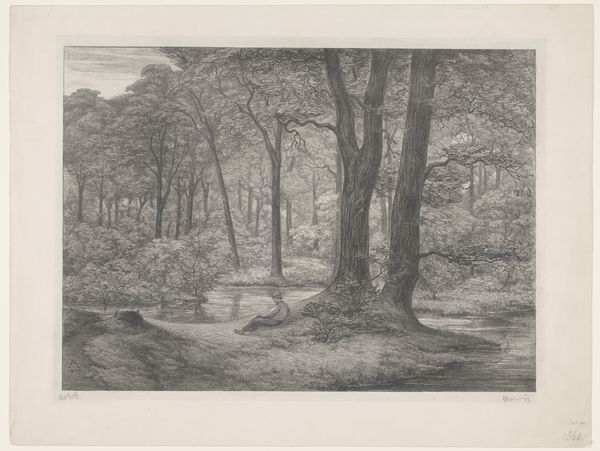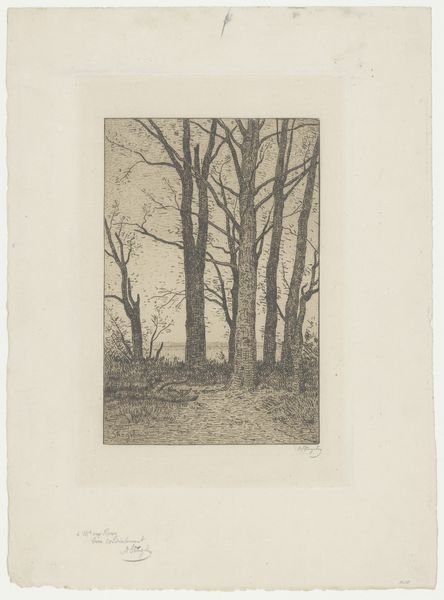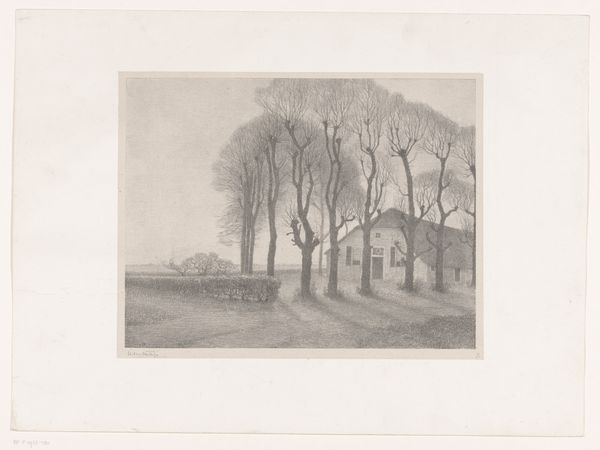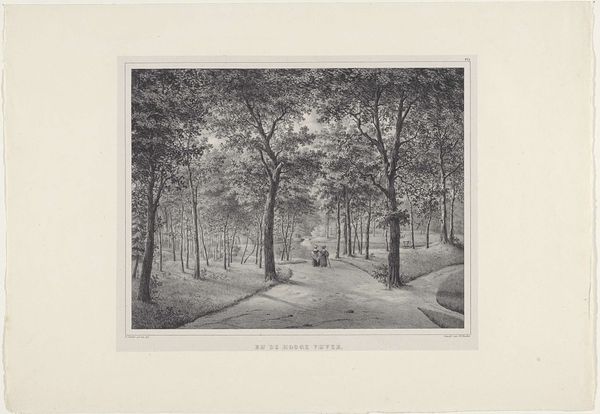
print, etching
# print
#
etching
#
landscape
#
realism
Dimensions: 170 mm (height) x 243 mm (width) (plademaal)
Curator: Holger Valdemar Rasmussen Magaard’s 1913 etching, “Allé”, invites us to contemplate the intersections of realism and atmosphere in the Danish landscape. Editor: It certainly sets a mood. Dark, almost bleak. The leafless trees lining the road feel a little ominous, like a scene from a fairy tale. Curator: The technical process, etching, is crucial here. Consider how Magaard used it to achieve those incredibly fine lines and the subtle gradations of tone. Think about the labor invested in each impression. Editor: Right, the density of line work, especially in the tree branches, gives a real sense of depth, doesn't it? It almost obscures the lone figure in the distance, drawing focus toward the immediate tactile experience. Curator: Absolutely. That figure becomes a focal point, doesn't it? Who is this person? What is their relationship to the space? The lack of clear identifiers lends them an almost spectral presence, open to interpretation. Is it an affirmation of how marginalized women are forced to live or an expression of liberation and agency for women that are embracing a modern society? Editor: I hadn't thought of gender, but your comments remind me that it isn't just the trees defining this scene. The building architecture itself, almost brutal in the left foreground, tells me about urbanization of formerly rural regions. This etching, like printmaking itself, makes this perspective widely accessible. Curator: Yes, and that very accessibility opens "Allé" up to numerous dialogues about cultural identity. Realism can also reveal subjective experience; we bring our histories to bear on the visual experience. What is deemed valuable in a cultural landscape? How is access constructed? Editor: Perhaps there's something defiant in the everyday-ness of the scene too. Look at how simply and meticulously that roadway is portrayed. It emphasizes labor that, especially in printmaking, invites questions about production and value in art. It also reveals aspects of urbanization. Curator: Ultimately, "Allé" shows us that what seems like a straightforward landscape rendering can invite much larger socio-historical queries when framed using accessible theory and analysis. Editor: It reminds me that material considerations and attention to craft expand the horizon for critical conversation on this art.
Comments
No comments
Be the first to comment and join the conversation on the ultimate creative platform.
